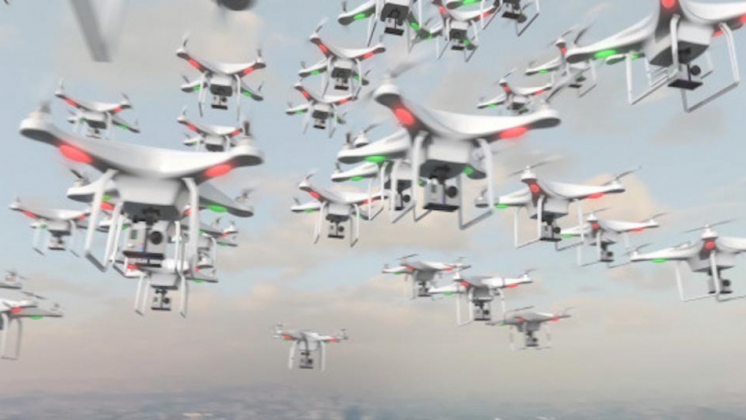The Drone Attack in Syria: An American initiative
The recent attempt to attack a Russian Air Force base in Syria with a group of explosively armed drones is nothing else than the testing of a specific US battle doctrine in the field.
In the scientific publication “Future Warfare: Robot Swarming” we already noted current US Military programmes which are dedicated to swarming technologies for military robots. As far back as 2014 and 2015, the US Army, Navy, and Air Force held a series of exercises. Several of them were financed by the agency DARPA, and military contractors and a whole collection of profile laboratories worked on the development and testing of prototypes. The doctrine itself got the name of swarmanoid, and control of the robots received the moniker of emergent coordination.
Penetrating enemy defences, distraction actions, precision strikes: all these functions can be fulfilled by a drone swarm.
However, simulations and exercises on the home front do not guarantee success in real battlefield conditions. This is why any state that wants to receive an objective evaluation of its military capabilities, be they new types of weaponry or the execution of tactical-operational-strategic missions, will try to ‘get its feet wet’ in live combat situations.
Syria is now such a testing zone for the Pentagon.
It is telling, that several American mass media outlets have used the same term as the military (drone swarming) to describe the failed attack. The question is not just if this is a well-established concept. The US themselves have practically hinted at who could have done this, which was confirmed by representatives of the Russian ministry of defence.
What is more, if we were to track prospective developments by American soldiers, we can find another ‘coincidence’. These are drones that were ‘built to spec’. This is not yet bout 3D models (although this technology is already seeing use in professional US armed structures), but of a technical project that was given to Washington’s proxies from terrorist groups.
And if we were to assume, that the Americans will continue their testing in Syria against the Russian military (which is important to evaluate reactions and vulnerabilities), then we will in the near future face the deployment of lasers, various cybertools, and also communications networks that are resistant to interference.
Of course, we need to take the wider geostrategic context into account as well. Seeing as the drone attack was launched from a de-escalation zone which is under the responsibility of Turkey, we must see this as a provocation which resembles the incident with the downed Russian aircraft. Then, the Gülenists among the ranks of the Turkish military were activated: the resulting political effect was very significant. And in the current case, the planners have gotten the same task of discrediting Turkey.
Translated from the Russian by V.A.V.










